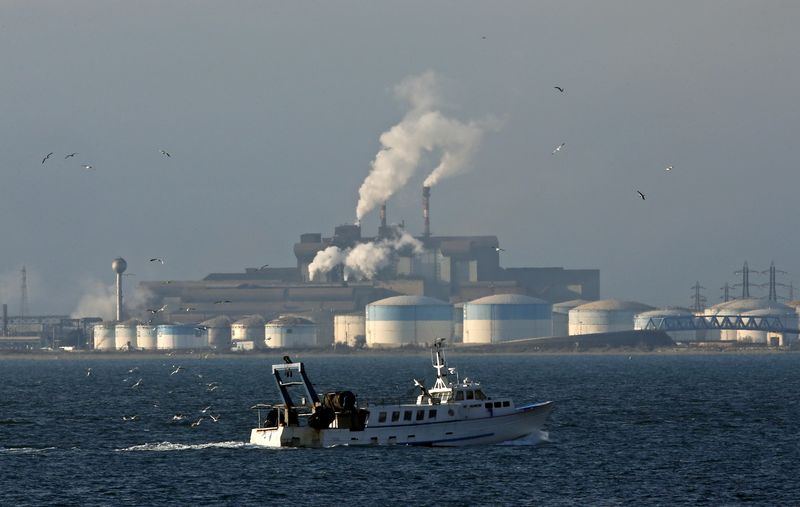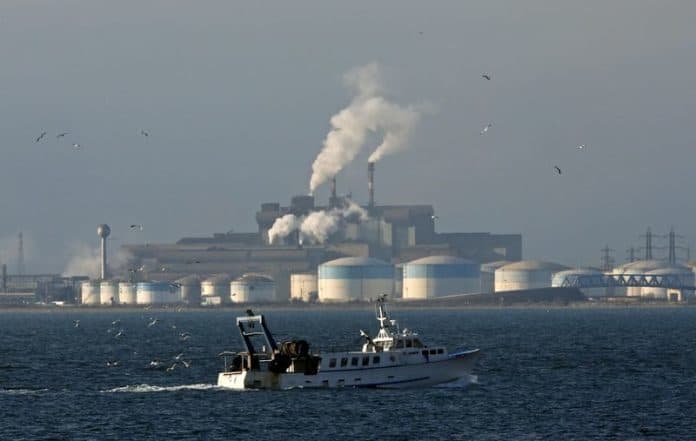 © Reuters. UPDATE 2-Oil edges up for third session on Mideast tensions
© Reuters. UPDATE 2-Oil edges up for third session on Mideast tensions* Market shrugs off gain in U.S. crude oil inventory
* Uncertainty over OPEC supply helping to cap price gains
* Weekly changes in U.S. inventories: https://tmsnrt.rs/2XkQF8e (Adds Zarif meeting in Tokyo, graphic, updates prices)
By Aaron Sheldrick
TOKYO, May 16 (Reuters) – Oil prices pushed higher on Thursday for a third day in a row, as fears of supply disruptions amid heightened tensions in the Middle East overshadowed an unexpected rise in U.S. inventories.
Brent crude futures were at $72.18 a barrel at 0612 GMT, up 41 cents, or 0.6%, from their last close. Brent closed up 0.7% on Wednesday.
U.S. West Texas Intermediate (WTI) crude futures were at $62.40 per barrel, up 38 cents, or 0.6%, from their previous settlement. WTI closed up 0.4% in the last session.
Analysts said oil was drawing support from the risk of conflict in the Middle East, with helicopters carrying U.S. staff from the American embassy in Baghdad on Wednesday out of apparent concern about perceived threats from Iran. a gain in U.S. inventories overnight is helping to cap prices, so too is uncertainty about whether OPEC and other producers will maintain into the second half of the year supply cuts that have boosted prices more than 30% so far in 2019.
The Organization of the Petroleum Exporting Countries (OPEC) said on Tuesday that world demand for its oil would be higher than expected this year. supply-side disruptions remain supportive of oil prices, OPEC has yet to release indicative statements on supply plans,” Benjamin Lu, commodities analyst at Phillip Futures in Singapore, told Reuters by email.
Supply losses from OPEC members Iran and Venezuela, now under U.S. sanctions, have deepened the impact of the OPEC-led production restrictions.
The so-called OPEC+ group of producers, which includes Russia, meets next month to review whether to maintain the pact beyond June.
U.S. crude inventories USOILC=ECI rose unexpectedly last week to their highest since September 2017, increasing by 5.4 million barrels and surprising analysts, who had expected a decrease of 800,000 barrels, the Energy Information Administration (EIA) said. EIA/S
An end this month to U.S. waivers that allowed some countries to buy Iranian oil after the reimposition of U.S. sanctions has prompted Tehran to relax restrictions on its nuclear programme and threaten action that could breach a 2015 nuclear deal.
But Iran’s foreign minister, Mohammad Javad Zarif, said in Tokyo on Thursday the country was committed to its obligations under the deal and was exercising “maximum restraint.” Prime Minister Shinzo Abe told Zarif in a meeting he was concerned the situation in the Middle East “is becoming very tense”.
An attack on four oil tankers in the Gulf on Sunday, for which no one has claimed responsibility, and Saudi Arabia’s announcement that armed drones hit two of its oil pumping stations have compounded concerns.
Asian shippers and refiners have put ships heading to the Middle East on alert and are expecting a possible rise in marine insurance premiums after the attacks. TECHNICALS-U.S. oil may rise into $63.06-$63.96 range
TECHNICALS-Brent oil may gain more to $73.80
U.S. crude inventories, weekly changes since 2017 png
https://tmsnrt.rs/2XlX17b Attacks on Saudi Arabia’s oil pipeline, ships off UAE’s Fujairah port
https://tmsnrt.rs/2WMoAXg
^^^^^^^^^^^^^^^^^^^^^^^^^^^^^^^^^^^^^^^^^^^^^^^^^^^^^^^^^^^>


